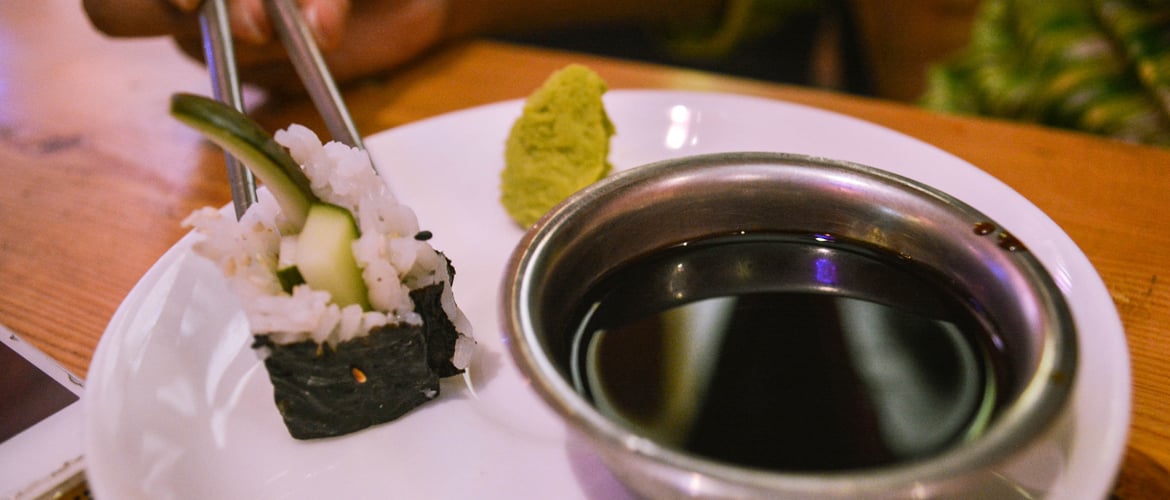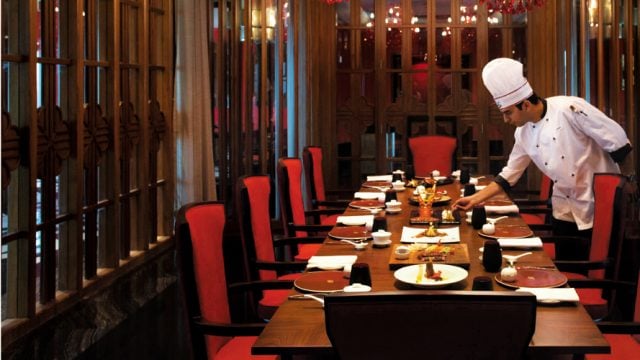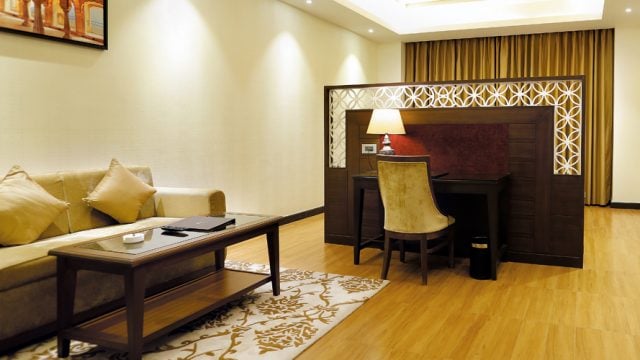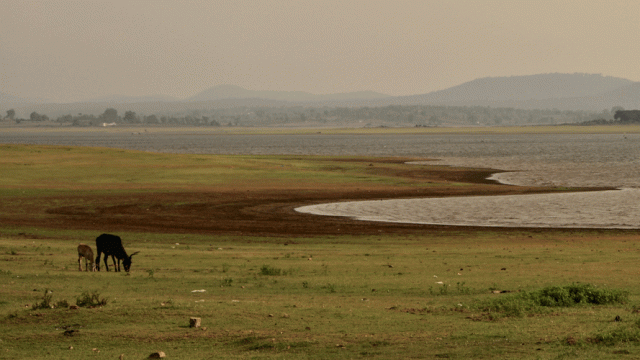Sundays in Delhi have become unusually lethargic. An indolent alter-ego seems to have taken over, one that’s
A wedge-shaped Tibetan colony in the city’s northern reaches, and not too far from the Yamuna, entering Majnu ka Tilla is akin to crossing the threshold into another world—and not just because the streets are at least five degrees cooler. A veritable mosaic of dharamshalas, Tibetan restaurants, and saffron-clad Buddhist monks lie in wait, interspersed with local shops teeming with curios and native goods. Retail therapy, however, would have to wait—I was there to eat my way around around this Little Tibet. And as a lover of Asian cuisines that don’t get their time in the limelight, I was spoilt for choice.
Tibetan, Bhutanese and even a few Korean restaurants line the colony’s thin alleyways, and domestic and international tourists keep darting in and out. Clearly, all establishments had great things on offer. Sensing my wavering allegiances, Akansha made the first decision—our debut would be at Dolma House. One of the larger joints in the area, it’s a friendly, inviting and no-frills establishment with affordable prices to boot. Overhead lamps provide a
warm glow to the interiors, but we grabbed the prized countertop seats next to their storefront window that were bathed in natural light. It’s much quieter there, and you get a charming panorama of life outside. Dolma’s expansive menu covers Tibetan, Bhutanese and Chinese fare alongside the usual Western options. The juxtaposition is fun—Himalayan tsampa porridge sits next to cornflakes on the breakfast menu!

Choosing to not Google the unknown, I ordered gyuma (Rs 120) and a bowl of dropa khatso (Rs 120)—I suppose their thumbnails looked appealing enough on the menu.Thankfully, once the dishes arrived, our adventurous spirit had paid off. Gyuma turned out to be a Tibetan beef sausage with flecks of barley and chilli. And though blood is one of the main components, it surprisingly wasn’t revolting. The natural casing outside was perfectly crunchy, and the meat inside smooth but decadent, with a slight aftertaste of iron. We would have licked the plate clean had we not had more on the itinerary!

For our second round, I chose to risk a search online about dropa khatso—and what we thought were flat noodles from the photograph on the menu, turned out to be tripe, or the inner lining of a cattle’s stomach. The dish might be an acquired taste for the Indian palate, especially once you’re aware of where it comes from. While I quite enjoyed the tender strips of meat served fried with slivers of onion and bell peppers, Akansha felt too nauseated to try more than a mouthful.

Once outside again, we made a beeline towards a small shop selling Laphing—a Tibetan street favourite, these are flat noodles made of mung bean that are rolled up, cut, and eaten cold with a filling of cooked soyabeans and spicy red chilli paste. Forty rupees seemed too less a price for these velvety bites, and despite the spice setting our tongues on fire, we fought over the last bite like gluttons. I wondered where the enthusiasm came from—chips had always been my peak heat tolerance level.

Our stomachs sufficiently full (at least for the next hour or so) we decided to explore the colony’s market—rates for handicrafts and textiles were dirt cheap, but we trained our eyes on its gastronomic offerings. Dried shiitake mushrooms, dried beef jerky, dried cheese…Tibetan food seemed a shrivelled umami paradise. Unsure whether we’d actually get to cook with these ingredients, I settled on imported Saewookkang shrimp chips (Rs 140), a popular snack from South Korea; the taste instantly transported me back home to Kolkata’s vast Chinatown, where restaurants would often serve complimentary prawn crisps. Meanwhile, another friend had called me up to ask my whereabouts, and on realising the kind of market I was in, insisted I bring back spicy Korean instant ramen. Samyang Foods’ fiery Budalk Bokkeumyeon has fascinated millennials the past few years, especially after being featured in several
‘nuclear’ noodle changes online.
Our next stop was the quaint Café 59, tucked into a side-alley. Unlike the afternoon rush in other restaurants, the place was deserted except for two cheerful staffers. After slight difficulty in understanding our order (their English was a work-in-progress), we sat back to enjoy the restaurant’s relaxed atmosphere. Quirky frames dotted pink
wallpapered walls, with Buddhist flags and Tibetan translations of books thrown into the mix. We ordered a 4-piece vegetarian sushi platter (Rs 130), but on knowing it was our first time in the area, the restaurant generously served up 12 pieces for the same price. While roughly made, the bite-sized cucumber and carrot maki rolls, California veggie rolls, and crispy veg rolls were the perfect afternoon snack. Finishing off our meal was a gigantic chocolate and walnut brownie (Rs 90) smothered in bitter chocolate sauce.
Kori’s was the only name I had prior knowledge of in the colony—and one that I refused to compromise on. Seeing as how we couldn’t handle a bounty after eating our way around, we stuck to chicken and seaweed soup (Rs 320) that came with a side of peanuts, glazed sweet potatoes, and white rice. I’m a sucker for complex broths, and the nori-infused goodness was my absolute dish of the day.
Rigo Coffee House came highly recommended by local students, making it our final stop. Short on cash, we bought their Po Cha, or Tibetan butter tea (Rs 40), along with a tall glass of our favourite peach iced tea (Rs 70). The former was an unexpected colour: salmon pink, going down quite smoothly despite neither of us having had the salty concoction before. As the sun started to set, I remembered the steamed Tibetan bun (Tingmo) resting at the bottom of Akansha’s bag, and considered soaking up the butter tea with it to make a (albeit blasphemous) version of chai with bun maska.
Majnu ka Tilla is delightfully affordable, housing a wide selection of Himalayan cuisine alongside a smattering of Pan-Asian offerings. The people are kind and friendly, and with a thousand bucks in your pocket, you could easily while away several hours in this little slice of Tibet.
Getting there: Majnu ki Tilla is located in the New Aruna Nagar area of New Delhi, about 34km away from the airport. One could either take a taxi or the underground. The closest metro station is Vidhan Sabha on the yellow line. Take a richshaw from the station to reach the colony or walk.
Food & Drink
International cuisine
Majnu ka Tilla





